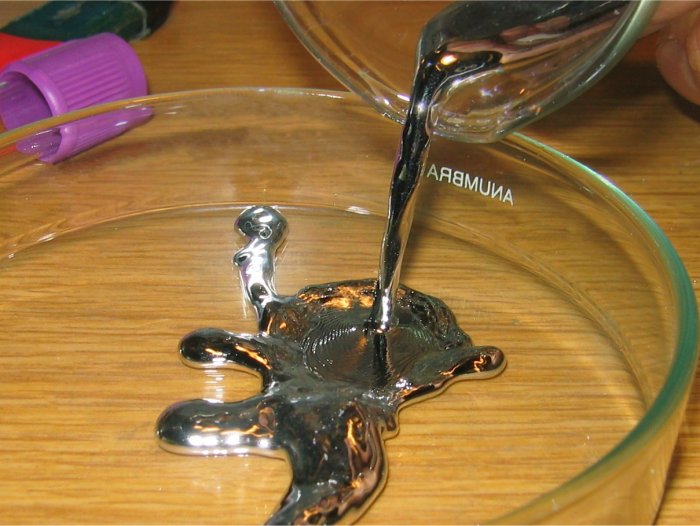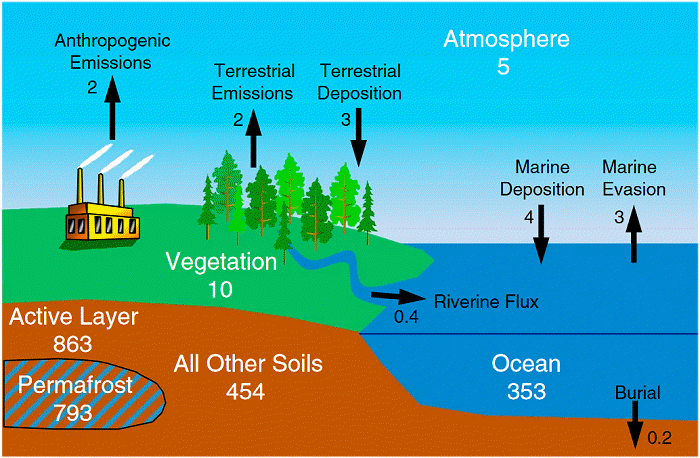
Image: Bionerd, CC BY 3.0
As if there weren’t enough concerns regarding the potential impacts of climate change, a new one has been added to the steadily growing list – the release of mercury from melting permafrost in the Northern Hemisphere.
While the burning of coal contributes to atmospheric emissions of mercury, permafrost in the northern hemisphere stores massive amounts of natural mercury, 793,000 tonnes of the stuff, according to a study published yesterday.
How Did The Mercury Get There?
Natural (and human-activity related) mercury present in the atmosphere binds with organic material in the soil. Microbial action can then again liberate the mercury, but this process virtually stops when soil freezes. In the case of permafrost regions, it is then buried by sediment and remains frozen.
The study, published in in Geophysical Research Letters, states northern permafrost soils represent 24 percent of all the soil above the equator and are the largest reservoir of mercury on the planet.

Major reservoirs in white (Gg Hg) and fluxes in black (Gg Hg yr−1). 1 Gg = 1,000,000,000 grams or 1000 tonnes.
“There would be no environmental problem if everything remained frozen, but we know the Earth is getting warmer,” said Paul Schuster, the study’s lead author and a hydrologist at the U.S. Geological Survey in Boulder, Colorado.
Thawing Permafrost Is Bad News All Round
If greenhouse gases emissions associated with human activities continue at current rates, there could be a 30–99% reduction1 in Northern Hemisphere permafrost area by the end of this century – and this spells trouble as once thawed, microbial action accelerates.
The impacts of large amounts of mercury being liberated could be dramatic and widespread. If it leaches into waterways, it may be taken up by microorganisms and transformed into a particularly toxic and persistent organic mercury compound called methylmercury. As it is bioaccumulative, methylmercury can spread throughout the food web; making fish and other aquatic organisms unsafe to eat.
As for airborne mercury, it can travel long distances, affecting communities and ecosystems thousands of kilometres from the point of origin.
Russian President Vladimir Putin may think melting permafrost is a good deal, but there’s increasing evidence it won’t be – both locally and globally. Aside from the mercury threat, thawing of permafrost will also accelerate release of carbon dioxide and methane; further increasing warming. Other nasty unexpected surprises may be in store, such as was the case in the release of anthrax in Siberia in 2016, which was thought to be permafrost thaw related.
While there are still many questions to be answered regarding the impact of a large-scale mercury release, do we really want to find out for sure by letting the circumstances happen? The threat of a permafrost mercury time-bomb is another compelling reason to accelerate and properly support the switch from burning fossil fuels for electricity to renewable energy sources such as solar power.
The study report (which will be freely available for the next few weeks), can be viewed here.

 RSS - Posts
RSS - Posts



Is there anything GW can’t do? Seems only limited by imagination. Anyways this is yesterdays news, global cooling is the new thing.